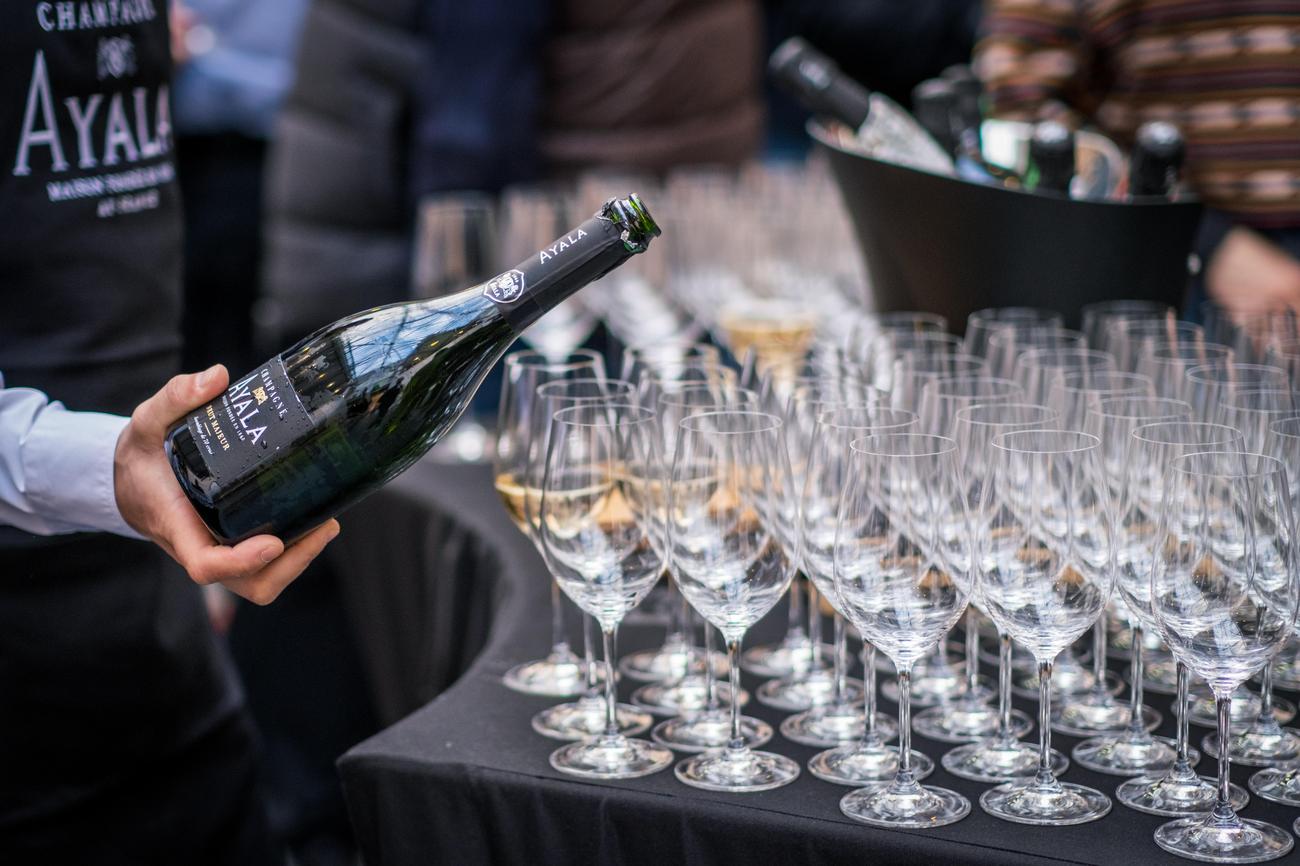Discover the Woman-Borne Champagne: Unveiling the Legacy

Welcome to a world where champagne takes on an entirely new meaning, one that intertwines history, elegance, and the remarkable stories of women. In the realm of beloved bubblies, there exists a special category, a tribute to the inspiring figures who have left an indelible mark on the champagne industry. So, what champagne is named after a woman? Prepare to embark on a captivating journey through time, as we uncork the tales behind these iconic champagne brands, each one bearing the name and legacy of a remarkable woman. From the sparkling splendors rooted in tradition to the tales of legendary female pioneers, we will delve into the rich history and cultural significance of these Woman-Borne Champagnes. Let’s raise our glasses and toast to the extraordinary women who have made their mark on the world’s most celebrated effervescent elixir.
What Champagne is named after a woman?
When it comes to champagne, the names behind the bottles often tell fascinating tales of strong and influential women. These remarkable figures have left a lasting impact on the champagne industry, shaping its history, flavor development, and cultural significance. Let’s dive into the captivating stories behind some champagnes named after women, uncovering the legacy they carry.
Madame Clicquot: The Champagne Revolutionary
One of the most iconic names in the world of champagne is Madame Clicquot, also known as Barbe-Nicole Ponsardin. She was a true pioneer, transforming her husband’s failing wine business into a global champagne powerhouse. Madame Clicquot became one of the first international businesswomen, defying the norms of her time. Her innovative methods and unwavering commitment to quality revolutionized the champagne-making process. With her visionary approach, Madame Clicquot established the foundations for what we now know as Veuve Clicquot, a champagne empire that withstands the test of time.
“Madame Clicquot, a true champagne revolutionary, transformed the industry and left an indelible mark on the historical champagne legacy.”
Louise Pommery: The Flavor Creator
In the world of champagne, flavor is paramount. It is here that Louise Pommery played a significant role. As the widow of Alexandre Pommery, she took over the family champagne house after her husband’s untimely death. Louise dedicated herself to perfecting and innovating the flavor profiles of Pommery’s champagnes. Her skilled blending techniques and attention to detail set new standards in taste and quality. Through her passion and mastery, Louise Pommery solidified the Pommery name as synonymous with exquisite champagnes.
“Louise Pommery’s commitment to transforming flavors created a legacy that continues to delight champagne enthusiasts today.”
Mathilde Emilie Laurent-Perrier: The Legacy Keeper
When her husband unfortunately passed away, Mathilde Emilie Laurent-Perrier inherited the Laurent-Perrier champagne house. With determination and a deep respect for tradition, she carried on her husband’s legacy, ensuring the champagne house thrived. Mathilde’s unwavering dedication to quality and her ability to honor the heritage of Laurent-Perrier played a crucial role in maintaining the champagne’s prominence. Her strong leadership and astute business acumen ensured that the Laurent-Perrier name continued to shine.
“Mathilde Emilie Laurent-Perrier’s unwavering commitment to upholding traditions secured the champagne house’s place in history.”
Apolline Henriot: The Champagne Connection
Born in Reims, Apolline Henriot married Nicolas Henriot, bringing with her a dowry of pinot noir grapes. This connection to the champagne industry solidified Apolline’s place in the legacy of champagne-making. With her husband, she built the esteemed Henriot Champagne House through hard work and dedication. Apolline’s contribution to the craft, alongside her connection to the vines, adds a layer of significance to the brand. Her story echoes the long-standing association between women and champagne, displaying the pivotal role they have played throughout history.
“Apolline Henriot’s connection to the world of champagne exemplifies the enduring bond between remarkable women and the sparkling drink.”
Lily Bollinger: The Champagne Visionary
In the 19th century, a revolutionary woman named Lily Bollinger emerged in the world of champagne. As one of the few female leaders in the industry at that time, Lily left an indelible mark on Bollinger Champagne. Her visionary leadership and dedication to preserving the House’s traditions and quality brought Bollinger to new heights of excellence. Lily Bollinger’s legacy lives on today, embodying the innovative spirit and resilience of women in the champagne world.
“Lily Bollinger’s remarkable vision propelled Bollinger Champagne into an era of excellence, leaving a legacy that transcends time.”
The world of champagne is filled with extraordinary women who have made significant contributions to the industry. From Madame Clicquot’s revolutionary spirit to the flavor development efforts of Louise Pommery, these women continue to inspire and captivate us. As we raise a glass of champagne named after a woman, we pay tribute to their enduring legacies. So, the next time you sip a glass of champagne, take a moment to uncover the story behind it and toast to the remarkable women who have shaped the world of bubbles.
“The legacy of these remarkable women lives on in each sip of champagne named in their honor, reminding us of the enduring impact of their contributions.”
Champagne is not just a drink for special occasions; it’s a fascinating world of fun facts waiting to be explored. Did you know that the pressure inside a champagne bottle is about 90 pounds per square inch? That’s more than triple the pressure in your car’s tires! If you’re curious to learn more intriguing tidbits about champagne, click here for an exciting journey into the world of bubbly: fun facts about champagne. Get ready to be amazed by the rich history, unique production process, and delightful stories behind this iconic beverage. Let the exploration begin!
Why Champagne Commands a Premium Price
[youtube v=”lBBj-K_qfIw”]
Champagne, synonymous with wealth and luxury, is renowned for its high price tag. While other sparkling wines like Prosecco or Karva are more budget-friendly, a decent quality bottle of champagne can cost anywhere from fifty to three hundred dollars, and vintages can even sell for thousands. But what exactly makes champagne so expensive?
The Exclusive Champagne Region
To truly be considered champagne, the sparkling wine must be made exclusively in the Champagne region, located about 150 kilometers east of Paris. This protected area in France is home to prestigious champagne cellars and sellers such as Moët and Chandon and Perrier Jouët. Any sparkling wine made outside this region must be labeled differently. As a result, the world’s entire stock of true champagne is produced within this relatively small area, totaling over 300 million bottles annually.
Unique Climate and Geography
The region’s climate and geography play a significant role in driving up the prices of champagne. Northern France experiences variable weather conditions, with an average temperature of 50 degrees Fahrenheit. This cooler temperature compared to other French wine-growing regions provides the grapes with the right acidity for sparkling wine production. However, the continental weather front that brings freezing temperatures presents a challenge for winemakers, making the winemaking process more difficult compared to more dependable ecosystems.
Meticulous Harvesting Process
Each year, during the harvest, Champagne witnesses an influx of 120,000 workers descending on the region to handpick grapes from the 84,000 acres of vineyards. By law, mechanical harvesting is forbidden, ensuring that only the best grapes are selected. This painstaking process is necessary to maintain the quality and uniqueness of each plot and vine, contributing to the overall excellence of champagne.
Ideal Soil Composition
The quality of soil is paramount for champagne production, and the region’s clay and chalk soil composition is believed to be the best in terms of quality. The clay and chalk provide the ideal structure for the vines, with the soil retaining water even during rainfall. Such well-drained soil is vastly important for the grapes to flourish and produce high-quality champagne, further maximizing its value.
The Traditional Method of Production
What sets champagne apart is the traditional method of production known as méthode champenoise. In this process, the wine undergoes primary fermentation in oak or stainless steel vats, followed by secondary fermentation inside the bottle. This meticulous technique is tightly controlled and restricted within the European Union, ensuring that wines from outside the Champagne region cannot be referred to as champagne. On the other hand, sparkling wines from around the world, produced using the same method, are labeled as sparkling wine produced via the “Méthode Traditionelle.”
Historical Significance and Prestige
Champagne’s reputation as a luxury and celebratory drink stems from its rich history. The production of champagne dates back to the third century when the Romans first planted vineyards in northeastern France. Its popularity grew during the mid-17th century when bottled fermentation was developed, and it became a drink fit for kings, including King Louis XIV. While initially finding the perfect balance of bubbles proved to be a challenge, champagne’s sparkling version gained immense popularity in the 19th century. Since then, it has remained associated with luxury, wealth, and prestige.
In conclusion, champagne’s exclusivity, unique climate, meticulous harvesting process, ideal soil composition, traditional production method, and rich history all contribute to its premium price tag. As global warming affects the region’s climatic conditions, the future of champagne production may face challenges. Nevertheless, the age-old tradition and association with luxury and celebration ensure that champagne will continue to be cherished and valued for years to come.
“Champagne, synonymous with wealth and luxury, is renowned for its high price tag. Its exclusivity and unique production process contribute to its premium price.”

FAQ
Question: Which iconic champagne brands are named after women?
Answer: Madame Clicquot, Louise Pommery, Mathilde Emilie Laurent-Perrier, Apolline Henriot, and Lily Bollinger are some of the remarkable women who have iconic champagne brands named after them.
Question: How did Madame Clicquot contribute to the champagne industry?
Answer: Madame Clicquot, also known as Barbe-Nicole Ponsardin, transformed her husband’s failing wine business and became one of the first international businesswomen in the world. She is known for creating the first-ever vintage champagne and was one of the first producers of rosé champagne.
Question: What role did Louise Pommery play in the flavor development of champagne?
Answer: Louise Pommery played a significant role in the flavor development of champagne. Her innovative approach and dedication to quality led to advancements in champagne production techniques, resulting in exquisite flavors.
Question: How did Mathilde Emilie Laurent-Perrier become involved in the champagne industry?
Answer: Mathilde Emilie Laurent-Perrier inherited her champagne house after her husband’s death. With determination and passion, she continued the legacy and took the champagne brand to new heights.
Question: What is the story behind Apolline Henriot’s connection to the champagne industry?
Answer: Apolline Henriot, born in Reims, married Nicolas Henriot with a dowery of pinot noir grapes, solidifying her connection to the champagne industry. Her involvement contributed to the success and reputation of the Henriot champagne house.











